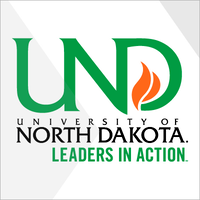- Location
- Grand Forks, North Dakota, United States
- Portals
-
-
 Grand Forks, North Dakota, United States
Grand Forks, North Dakota, United States
-
- Categories
- Civil engineering
Achievements
Latest feedback
Recent experiences
Civil Engineering Design (Capstone Design)
CE 482/483
Looking to elevate your organization, and bring it to the next level? Bring on learners from UND to be your learner-consultants, in a project-based experience. Learners will work on one main project over the experience of the semester, connecting with you as needed with virtual communication tools. Learners in this program/experience can: Understand the principles of engineering project management and team working. Complete an information search, identify relevant codes, and determine project constraints. Work as a member of a team to design a “real-life” engineering project in one of the primary civil engineering areas, e.g., environmental, geotechnical, structural, transportation, or water resources, but having multidisciplinary engineering and project management aspects. Evaluate various preliminary design alternatives, prepare preliminary design reports, and select an option for the final design. Complete a preliminary design, write a design report and prepare a PowerPoint/oral presentation related to the design.
Hydrology Software Analysis Research
CE 421
Looking to elevate your organization, and bring it to the next level? Bring on learners from UND to be your learner-consultants, in a project-based experience. Learners will work on one main project over the experience of the semester, connecting with you as needed with virtual communication tools. Learners in this program/experience can: characterize watersheds and calculate the quantity of precipitation, evaporation, evapotranspiration, infiltration, and runoff in a watershed‐based on measured and estimated values apply basic probability and statistical methods within the fields of hydrology including frequency analysis of precipitations and discharges in streams model rainfall‐runoff for a watershed using several established methods analyze hydrographs, and perform basic flow routing in rivers and reservoirs to predict routed hydrographs model basic groundwater hydrology apply a watershed computer model to model the rainfall‐runoff processes within a watershed
